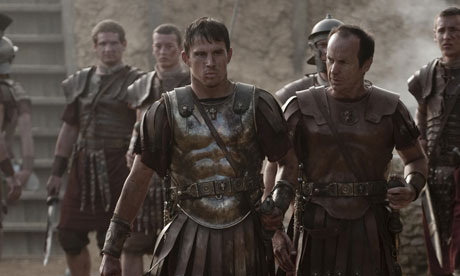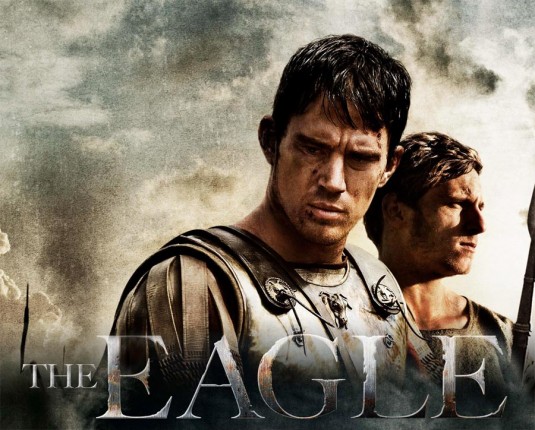THE EAGLE
One tends to approach the film version of a favourite novel with some trepidation, especially if it’s a formative novel of one’s childhood, as greatly loved today as it was when first read. Have the film-makers changed it? Have they ruined it?
With The Eagle, the film based on Rosemary Sutcliff’s 1954 children’s novel The Eagle of the Ninth, the answer to the first question is ‘yes, and how!’
Whilst the main characters and the perilous quest for the lost Eagle standard of the Ninth Legion are still there, the film has no Cradoc, no Cottia, no Cub and the roles of Uncle Aquila and Guern the Hunter are cut short or changed. If you accept that cinema demands a different kind of storytelling from the novel and that it has time limitations, you’ll agree that it can’t embrace every nuance of character in a novel, or indeed every character; nor can it include every subplot, no matter how integral these are to the shaping of character and hence to the audience’s emotional investment in the story.
So have they ruined it?
I can’t help thinking that in The Eagle, the film-makers have slashed and burned with such abandon that the film bears only the most superficial resemblance to the novel. If I hadn’t read The Eagle of the Ninth I’d consider The Eagle a pretty good adventure film, more involving, more engaging than last year’s cartoonish Centurion, also based on the legend of the lost Ninth Legion. The film is well-paced, immediate and exciting in its chase and battle scenes (no freeze-frame or CGI silliness here); it has a strong sense of place and period – never mind the inaccuracies: most of the audience won’t care about those. And, no matter how little I like them, the changes in the story do have their own internal logic.
But I can’t un-read the novel. And without, I hope, my affection for it making me feel I own it (‘how dare they change what I love’), I think the film-makers have thrown the baby out with the bathwater.
The problem lies mainly with the central characters, Marcus and Esca. They lack the depth Sutcliff gives them in the novel and they don’t change as a result of the conflicts and ordeals they undergo (as epitomised in that horrible, trite ending). So it’s hard to take the heroes to our hearts – frankly, I don’t much care what happens to film-Marcus and film-Esca, I’m just enjoying the pursuits and the fights. Which, I suppose, is how the movie moguls de nos jours perceive themselves to be giving their target audience (young males 15-30?) what they want. I’d like to think they’d want more.
One of Sutcliff’s major themes in the novel is the bond of friendship and loyalty. The film keeps the master/slave relationship between Marcus and Esca throughout the quest, even reversing it during the most dangerous phase. So there’s no room for Marcus to free Esca before they set out and to declare, stirringly, ‘Esca, I should never have asked you to come with me into this hazard when you were not free to refuse…No one should ask a slave to go with him on such a hunting trail; but – he might ask a friend.’
Another important theme is that of the tension between conqueror and conquered. I'm sad that in the film there’s no Cradoc and no Cottia and therefore no indication, except on the most brutal level, of the clash of culture and outlook between Roman and Briton, much less how it might begin to be resolved. In the film, Marcus, if he thinks about them at all, appears to see Britons as unreconstructed savages from beginning to end. In the novel, his encounters with conquered Cradoc and semi-Romanised Cottia and her family, as well as his growing friendship with the enslaved Esca, all contribute to changing his attitude to Rome’s subjects, so that at the end of the novel he decides not to return to his native Italy but to settle in Britain of the ‘pale and changeful northern skies and the green plover calling’. Even if there was no time in the film for Cradoc and Cottia, surely the novel’s symbolism of Cub’s release or the wonderfully visual metaphor Esca makes from the contrast between the straight lines of the pattern on Marcus’s dagger sheath and the formless swirls on a British war shield could have taken their place? Surely there should have been room for at least one of these in a film nearly two hours long.
In sum, The Eagle, though good of its type, is a less interesting film than it might have been. But if it encourages people to read The Eagle of the Ninth and revives interest in Rosemary Sutcliff’s other absorbing, inspiring novels, then it will have done its work.


